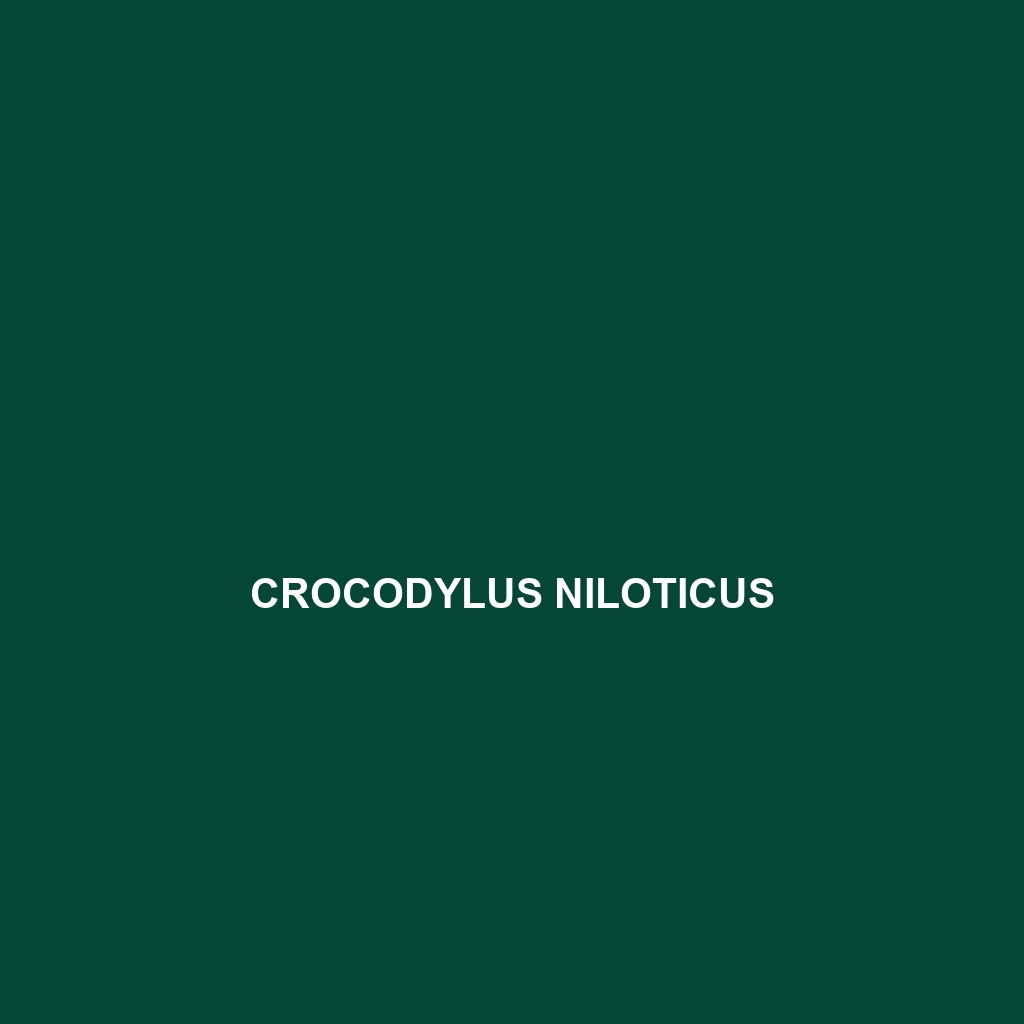Crocodylus intermedius
Common Name: Crocodylus intermedius
Scientific Name: Crocodylus intermedius
Habitat
Crocodylus intermedius, commonly known as the Orinoco crocodile, primarily inhabits the freshwater ecosystems of the Orinoco River and its tributaries. This species is predominantly found in regions of Colombia and Venezuela, favoring swamps, rivers, and lagoons that provide the necessary environment for hunting and nesting. The habitat is characterized by rich biodiversity, including various fish and bird species, which contribute to a balanced ecosystem.
Physical Characteristics
The Orinoco crocodile is one of the largest crocodilian species, capable of reaching lengths of up to 5 meters (16 feet). Its coloration typically ranges from olive brown to gray, often with dark banding patterns along the body, providing excellent camouflage in its natural habitat. Notable features include a long, narrow snout and distinctive scutes that run along its back, which enhance its hydrodynamic shape, making it an efficient swimmer.
Behavior
Crocodylus intermedius is primarily a solitary animal, exhibiting territorial behaviors, especially during mating season. This species is mostly nocturnal, using the cover of night to hunt for prey. Known for their stealth, Orinoco crocodiles lie in wait along riverbanks or submerged in water, enabling them to ambush unsuspecting animals. They are also known to perform basking behaviors on sunny banks to regulate their body temperature.
Diet
As carnivores, Orinoco crocodiles possess a varied diet mainly consisting of fish, birds, and small mammals. Their feeding habits adapt based on seasonal availability, with fish making up a substantial portion of their diet during periods of higher water levels. Their powerful jaws and sharp teeth allow them to efficiently capture and consume prey, playing a vital role in controlling fish populations in their ecosystem.
Reproduction
Crocodylus intermedius reproduces during the dry season, typically from April to June. Females build nests on sandy riverbanks, laying an average of 20 to 40 eggs. After an incubation period of about 80 to 90 days, hatchlings emerge and are escorted to water by the female. Interestingly, maternal care is provided, with females remaining protective of their offspring during the early stages of life.
Conservation Status
The Orinoco crocodile is currently classified as critically endangered due to habitat loss, poaching, and other human-induced threats. Conservation efforts are underway to protect both their natural habitats and populations, highlighting the need for increased awareness and intervention to ensure their survival.
Interesting Facts
– Crocodylus intermedius is one of the few crocodile species with a high level of parental care for their young.
– Though historically widespread, populations of Orinoco crocodiles have drastically declined, and they now hold a significant cultural importance in local folklore.
– This species is often confused with the more common American crocodile, but they can be distinguished by their unique snout shape and size.
Role in Ecosystem
Crocodylus intermedius plays a crucial role in its ecosystem as a top predator. By regulating fish populations, they help maintain the balance between various aquatic species in their habitat. Furthermore, their nesting activities contribute to nutrient distribution within the riverbanks, promoting biodiversity in the surrounding areas.
This structured HTML content provides a comprehensive description of the Orinoco crocodile, incorporating SEO optimization techniques to enhance search visibility.
